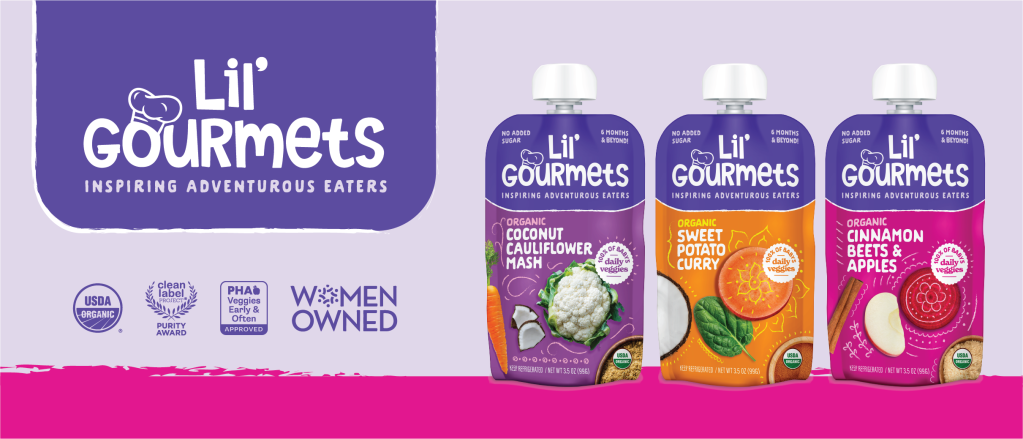Q&A with Thea Bourianne, MBA, RD, LDN
Q: What do the disruptions in the supply chain and increasing food prices mean for people with allergies? How do these issues increase the risk of allergy exposure?
A: The disruptions in the supply chain are affecting all categories, across products and ingredients, which is driving prices up for all consumers, including allergy consumers (who represent about 85 million people in the US). FARE research shows food allergic consumers spend about 5% more than the average consumer, which means these price increases will likely affect them more.
Brands may need to be sourcing alternative ingredients during these supply chain shortages, however that should not change the risk to the consumer. If a manufacturer reformulates a product across the top 8 allergens, they are required to accurately label the information on package. It’s important for shoppers to always double check the allergen statements on the label, even if it’s a product they regularly purchase.
Q: Why should CPGs and manufacturers ensure they have proper labeling (including digital disclosure) and accurate product content, especially amid the current supply chain crisis?
A: It goes without saying that truthful and not misleading labeling is the cornerstone of food labeling regulation, but what many may not realize is that this extends to the digital shelf as well.
Anywhere a product can be viewed or sold is considered an extension of the product label in the eyes of the FDA. Not only will proper labeling ensure compliance with FDA law, but it is also equally important to brands. Complete digital product information will help consumers find their products online and evaluate whether it meets the personalized needs of each family.
Q: What are the dangers/risks for brands that don’t prioritize creating clearer and more concise labeling and product data? What are the dangers of using unregulated terminology? And how does the supply chain crisis further heighten these risks?
A: Food allergies and sensitivities are very serious health concerns for shoppers with those restrictions. Statements like “made in a facility that also processes tree nuts” are very confusing for consumers to read when the product itself does not include tree nut ingredients. These types of statements are unregulated and create more confusion, while not protecting the CPG brand at all from a liability standpoint.
Q: Can you detail 3 to 4 steps or strategies that CPGs and manufacturers can take to improve their labeling and product content, meet consumer needs and alleviate consumer stress around allergens?
A: For CPGs and manufacturers to improve food labeling and alleviate stress, they must first:
- Have well documented, frequently updated information about ingredient suppliers and manufacturing practices in those facilities. This documentation should be made available to employees that are triaging consumer inquiries regarding ingredients – particularly for those who are allergic or sensitive to ingredients outside of the top 9.
- Clearly label all products using the standard “Contains:” statement for the top 9 allergens, while calling out particular tree nut, fish, and/or shellfish that are used in the product formulation (e.g., almonds, tuna, lobster). While this may seem obvious, these statements are currently voluntary.
- Brands making on-package callouts about being free from certain allergens are quite rare, however, food allergy shoppers are far more brand loyal than the average shopper. Brands that are manufacturing their products in allergen-free facilities should do more to communicate that on-package or online, even if it’s just one of the top 9 allergens. For example, a statement such as “Produced in a peanut-free facility” is effective.
Q: How can brands ensure their products (and their full product content) are correctly onboarded to retailers’ sites and shelves?
A: Brands are tasked with many avenues of manual data entry to comply with retailer needs. That is why submitting product data through Label Insight is free, and as easy as dragging and dropping images of the digital label. Visit labelinsight.com for more information.
Q: What advantages/benefits will improving product data and labeling bring CPGs and manufacturers? More specifically, how would working with NielsenIQ benefit them in this area?
A: NIQ has invested in Label Insight this year to broadly expand the depth of their coding across products, ingredients, and derived attributes, including allergens. Our registered dietitians are constantly working to ensure the most current and forward-looking attribution to ensure our clients are meeting the ever-changing needs of consumers.
Q: We have “may contain” statements on our products. Does the current dialogue surrounding allergies, with the passage of FASTER act support this labeling?
A: The FASTER Act makes sesame the ninth top allergen in the U.S. that requires plain-language labeling on a food product label, joining egg, fish, milk, tree nuts, peanut, soybean, shellfish, and wheat. While the FASTER act requires sesame labeling, it does not amend or add other allergen labeling regulations and the unregulated “may contain” statements are still not addressed. The FASTER Act does, however, go on to require the Secretary of Health and Human Services (HHS) to issue a report on scientific opportunities in food allergy research that examines prevention, treatment, and new cures. In addition, the legislation establishes a risk-based scientific process and framework for establishing additional allergens covered by the Federal Food, Drug, and Cosmetic Act.
Q: Why does the prevalence of food allergies and sensitivities seem to be increasing in comparison to years past? Conventional wisdom says avoid early exposure to foods, does this still apply?
A: While previous recommendations were to delay exposure to certain foods, there is no evidence that delaying the introduction of any specific food beyond 6 months of age helps to prevent an allergy, and that in fact the opposite is more likely. Over the past 5 to 10 years, it has become widely accepted that early introduction of foods such as peanuts, fish, and eggs may be beneficial in preventing food allergy, and that delaying food introduction might contribute to allergic disease.

Webinar: Food allergy consumer journey and implications for grocery industry
Watch a recording of leaders from FARE and wellness industry experts from NielsenIQ for insights into the food allergy consumer journey and implications for the grocery industry.
About the author
Thea is a licensed and registered dietitian and Senior Solutions Consultant at NielsenIQ Label Insight. She works strategically with global CPG and retail clients to build data-driven, customer-centric solutions with organizations like the FDA, American Heart Association, Target, Walmart, Conagra and Unilever. Thea is passionate about safe, transparent, sustainable, wholesome products and strives for best-in-class customer experiences to make the healthy choice the easy choice.
Sources
- Du Toit G, Katz Y, Sasieni P, Mesher D, Maleki SJ, Fisher HR, et al. Early consumption of peanuts in infancy is associated with a low prevalence of peanut allergy. J Allergy Clin Immunol. 2008;122(5):984–91. [PubMed] [Google Scholar]
- Kull I, Bergstrom A, Lilja G, Pershagen G, Wickman M. Fish consumption during the first year of life and development of allergic disease during childhood. Allergy. 2006;61(8):1009–15. [PubMed] [Google Scholar]
- Koplin JJ, Osborne NJ, Wake M, Martin PE, Gurrin LC, Robinson MN, et al. Can early introduction of egg prevent egg allergy in infants? A population-based study. J Allergy Clin Immunol. 2010;126(4):807–13. [PubMed] [Google Scholar]



